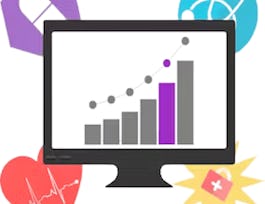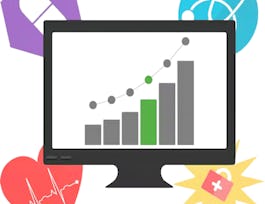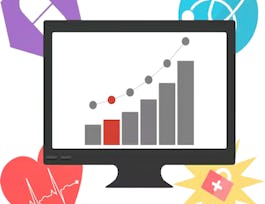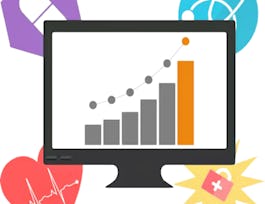This course teaches you the fundamentals of computational phenotyping, a biomedical informatics method for identifying patient populations. In this course you will learn how different clinical data types perform when trying to identify patients with a particular disease or trait. You will also learn how to program different data manipulations and combinations to increase the complexity and improve the performance of your algorithms. Finally, you will have a chance to put your skills to the test with a real-world practical application where you develop a computational phenotyping algorithm to identify patients who have hypertension. You will complete this work using a real clinical data set while using a free, online computational environment for data science hosted by our Industry Partner Google Cloud.


Identifying Patient Populations
This course is part of Clinical Data Science Specialization
Taught in English
Some content may not be translated

Instructor: Laura K. Wiley, PhD
3,212 already enrolled
Included with 
Course
(37 reviews)
Recommended experience
What you'll learn
Create a computational phenotyping algorithm
Assess algorithm performance in the context of analytic goal.
Create combinations of at least three data types using boolean logic
Explain the impact of individual data type performance on computational phenotyping.
Details to know

Add to your LinkedIn profile
7 quizzes
Course
(37 reviews)
Recommended experience
See how employees at top companies are mastering in-demand skills

Build your subject-matter expertise
- Learn new concepts from industry experts
- Gain a foundational understanding of a subject or tool
- Develop job-relevant skills with hands-on projects
- Earn a shareable career certificate


Earn a career certificate
Add this credential to your LinkedIn profile, resume, or CV
Share it on social media and in your performance review

There are 5 modules in this course
Learn about computational phenotyping and how to use the technique to identify patient populations.
What's included
5 videos10 readings2 quizzes
Understand how different clinical data types can be used to identify patient populations. Begin developing a computational phenotyping algorithm to identify patients with type II diabetes.
What's included
5 videos2 readings2 quizzes
Learn how to manipulate individual data types and combine multiple data types in computational phenotyping algorithms. Develop a more sophisticated computational phenotyping algorithm to identify patients with type II diabetes.
What's included
2 videos2 readings2 quizzes
Understand how to select a single "best" computational phenotyping algorithm. Finalize and justify a phenotyping algorithm for type II diabetes.
What's included
1 video1 reading1 quiz
Put your new skills to the test - develop an computational phenotyping algorithm to identify patients with hypertension.
What's included
1 reading1 peer review
Instructor

Offered by
Recommended if you're interested in Data Analysis

University of Colorado System

University of Colorado System

University of Colorado System

University of Colorado System
Why people choose Coursera for their career




Learner reviews
Showing 3 of 37
37 reviews
- 5 stars
72.97%
- 4 stars
16.21%
- 3 stars
2.70%
- 2 stars
0%
- 1 star
8.10%
New to Data Analysis? Start here.

Open new doors with Coursera Plus
Unlimited access to 7,000+ world-class courses, hands-on projects, and job-ready certificate programs - all included in your subscription
Advance your career with an online degree
Earn a degree from world-class universities - 100% online
Join over 3,400 global companies that choose Coursera for Business
Upskill your employees to excel in the digital economy
Frequently asked questions
Unfortunately at this time we can only allow students who have access to Google services (e.g., a gmail account) to complete the specialization. This is because we give students access to real clinical data and our privacy protections only allow data sharing through the Google BigQuery environment.
Access to lectures and assignments depends on your type of enrollment. If you take a course in audit mode, you will be able to see most course materials for free. To access graded assignments and to earn a Certificate, you will need to purchase the Certificate experience, during or after your audit. If you don't see the audit option:
The course may not offer an audit option. You can try a Free Trial instead, or apply for Financial Aid.
The course may offer 'Full Course, No Certificate' instead. This option lets you see all course materials, submit required assessments, and get a final grade. This also means that you will not be able to purchase a Certificate experience.
When you enroll in the course, you get access to all of the courses in the Specialization, and you earn a certificate when you complete the work. Your electronic Certificate will be added to your Accomplishments page - from there, you can print your Certificate or add it to your LinkedIn profile. If you only want to read and view the course content, you can audit the course for free.

